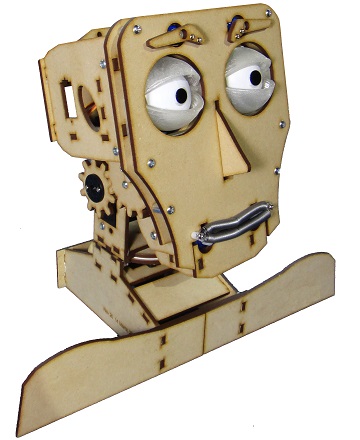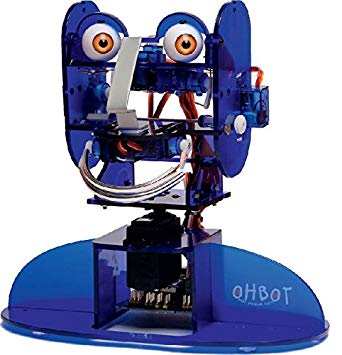Principles & Practices Week #1
Introduction
My final project idea falls in the area of social robotics, as it is meant to serve kids who suffer from autism spectrum disorder (ASD). Recently, researchers have been tinkering around with using robots in the treatment and rehabilitation of kids with autism, and they found very positive reactions from kids engaging with robots. According to an experts, autistic kids find it easier to interact with robots than humans because their reactions and expressions are simpler and less overwhelming.
Problem & Solution
Autistic kids are characterized with facial expressions recognition impairment, they can't simply infer from a person's face if s/he is happy, angry or sad.
My project idea is an Animatronic Head, a programmable robotic kit for children with autism. The child can assemble the robot and teach it (and themselves) to express various human-like emotions and gestures using block-based programming.
Project objectives
The project idea was inspired from this video:
My goal is to develop a kids’ “friendly” and less “creepy” version of this animatronic head.
I googled “animatronic head” to find various designs for different purposes. There were two specific versions that caught my attention.
The first version is FRITZ:

FRITZ is friendly and expressive; however, it is not designed to be programmed by kids.
The second version is OHBOT:

OHBOT is also friendly, and it is designed specifically to be programmed by kids. However, OHBOT’s facial features are not expressive.
Thus, my project will be a kind of integration of FRITZ and OHBOT’s strengths, which are expressiveness and programmability.
Functions:
My animatronic head project will work in two mode:
1- Training/expression mode: In this mode, the child will elicit a pre-programmed reaction (facial expression accompanied with speech) from the robot by placing a QR code or an RFID card in front of it. The way, the child will learn various facial expression.
Input: QR or RFID code
Output: Facial expression and voice
2- Programming mode: In this mode the child will get to program the reactions themselves.
Input: Script (using block-based programming)
Output: Facial expression and voice
Project Sketch
